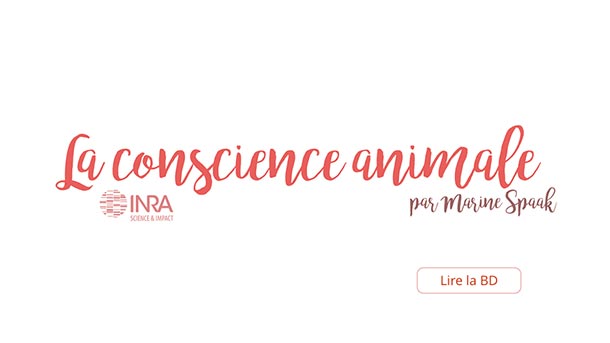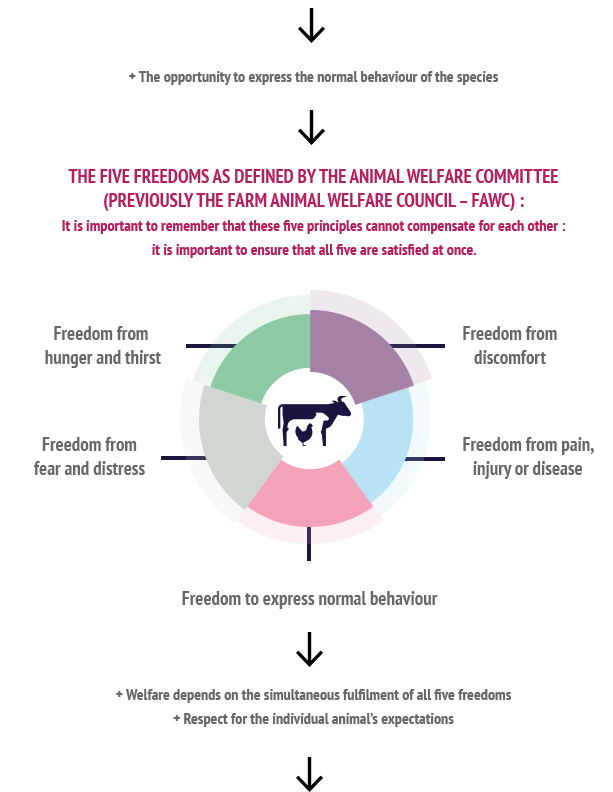Animal welfare
What is it?
Knowledge Hub
Explore current learning and research on animal welfare
News
Discover the latest topics and issues
in animal welfare
Understanding animal welfare
How we define animal welfare
The concept of animal welfare may sometimes seem subjective and can be interpreted in different ways. Despite this impression, scientific consensus does exist and is the basis for the FRCAW's definition:
"The welfare of an animal is its positive mental and physical state as related to the fulfilment of its physiological and behavioural needs in addition to its expectations. This state can vary depending on the animal's perception of the situation."
(Anses, 2018)
Need
A need is a requirement for survival and quality of life related to the maintenance of homeostasis and behavioural motivations. Some examples are thirst, bedding, exploration of the environment, and interactions with other animals. The non-fulfilment of a need generates a state of unease and/or frustration that can induce behavioural and/or physiological disturbances (state of chronic stress, for example) and increase the risk of disease.
* Source: Anses, 2018. ANSES proposes a definition of animal welfare and sets the foundation for its research and expert appraisal work. URL https://www.anses.fr/en/content/anses-proposes-definition-animal-welfare-and-sets-foundation-its research-and-expert.
Expectation
An expectation is a mental process generated by the anticipation of an event, to which the animal will refer to assess the valence of that event, from pleasant to unpleasant. Expectations are reflected in anticipatory behavioural and physiological responses. Depending on the level of fulfilment of its expectations, the individual feels positive or negative emotions. Negative emotions can be manifested through behaviour of frustration or redirection. This notion of expectation in animals, while well characterised in experimental psychology, is still difficult to determine in practice.
* Source: Anses, 2018. ANSES proposes a definition of animal welfare and sets the foundation for its research and expert appraisal work. URL https://www.anses.fr/en/content/anses-proposes-definition-animal-welfare-and-sets-foundation-its research-and-expert.
Mental state
The concept of welfare applies to the mental dimension of an animal's perception within its environment. The concept is mainly individual (as opposed to group-based) and contextual , with every environment having a different impact on the individual. A level of welfare is then determined for a particular individual in a given environment. This positioning is not intended to minimise the importance of the group, which is part of the individual's environment on which welfare assessment is based.
The mental aspect draws attention to the fact that good health, an adequate level of production or lack of stress are not sufficient in themselves. It is also necessary to consider what the animal feels by determining subjective unpleasant perceptions such as pain and suffering and also looking for signs that express positive emotions (satisfaction, pleasure, etc). The analysis of an animal's behaviours and its physiological and health status can provide an integrated view of how it has adapted to its environment and of its general well-being.
* Source: Anses, 2018. ANSES proposes a definition of animal welfare and sets the foundation for its research and expert appraisal work. URL https://www.anses.fr/en/content/anses-proposes-definition-animal-welfare-and-sets-foundation-its research-and-expert.
Emotion
Emotion is seen as a fleeting or ephemeral reaction to a particular event.
It generally consists of two components:
- Level of system activation: high / low
- Valence: positive / negative
Source :
See Russell and Barrett, 1999
Russell, J.A., Barrett, L.F., 1999. Core affect, prototypical emotional episodes, and other things called emotion: dissecting the elephant. J. Pers. Soc. Psychol. 76, 805-819. https://doi.org/10.1037/0022-3514.76.5.805

From good treatment to welfare
THEORY
GOOD TREATMENT
The actions that humans undertake or carry out with the intention of meeting the needs of animals such as feeding, housing and care. This approach is anthropocentric.
WELFARE
A positive mental and physical state as related to the fulfilment of its physiological and behavioural needs in addition to its expectations. This state can vary depending on the animal’s perception of the situation.
This approach is animal-centric.
EXAMPLE
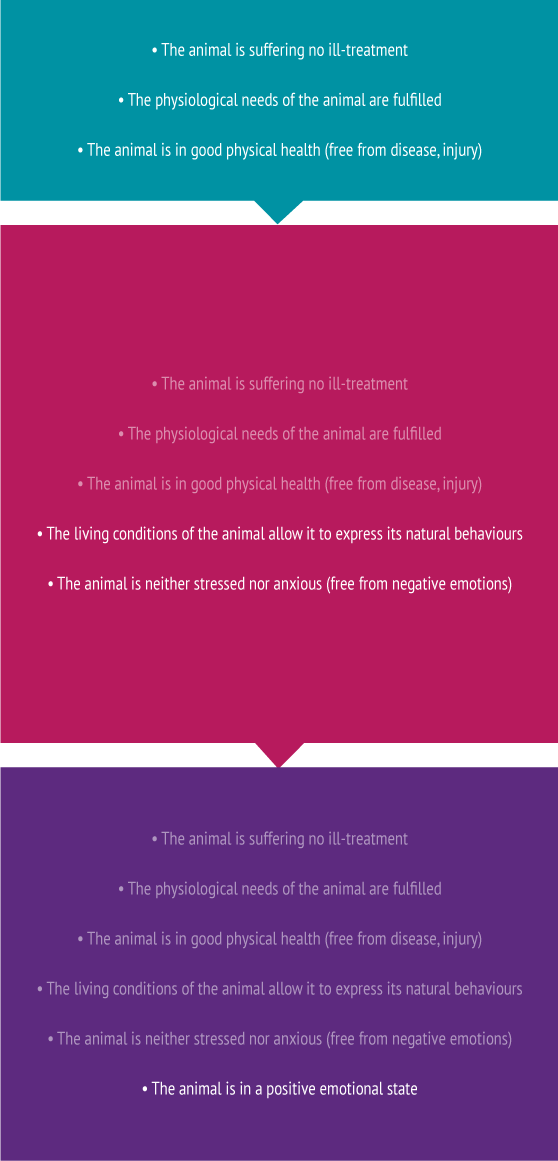
EXAMPLE
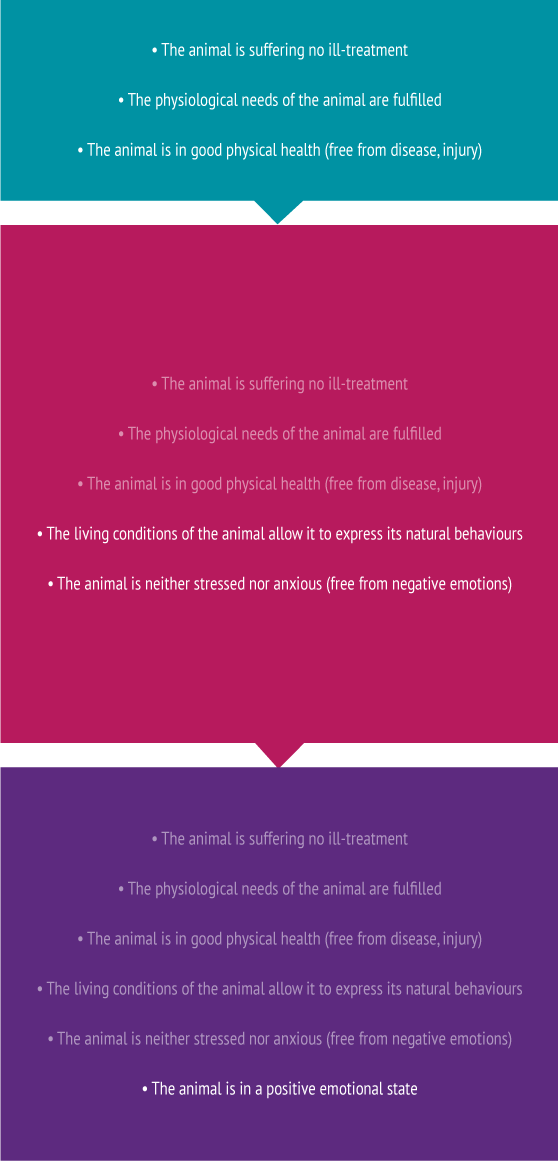
Did you know ?
Behavioural changes are often the first signs of a state of unease. Knowing how to observe an animal allows the early detection of other problems: physiological, sanitary, production, etc.
News related to
to animal welfare
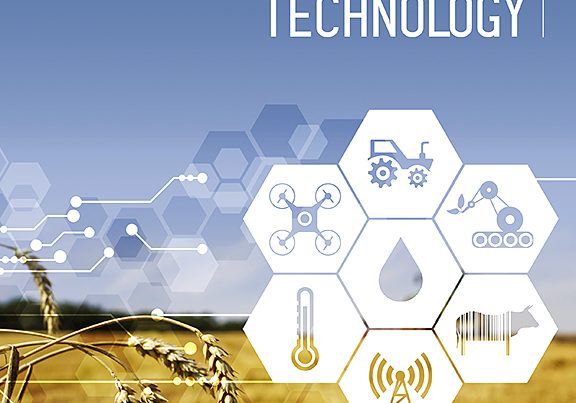 Decoding vocal indicators of stress in laying hens: A CNN-MFCC deep learning framework
Decoding vocal indicators of stress in laying hens: A CNN-MFCC deep learning framework

